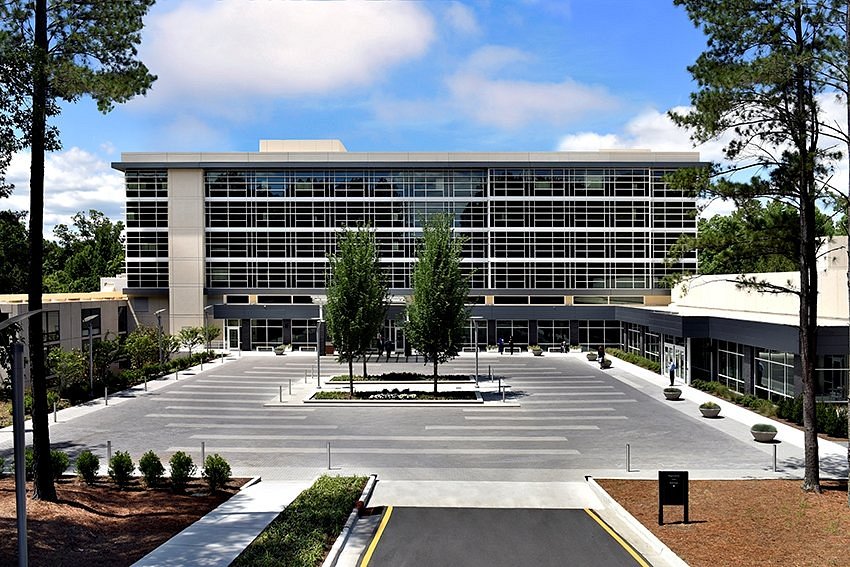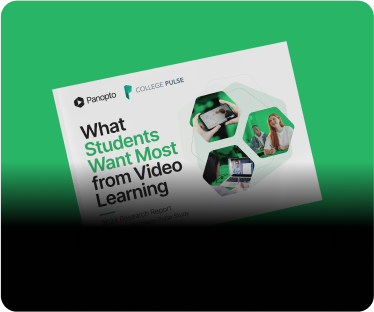University of Birmingham
The evolution of learning: A biologist flips the classroom at the University of Birmingham

Achievements
Professors able to curate course materials
More time for instructors to meet students’ needs
Recorded feedback boosts student learning
The Challenge
It was the first morning on the first day of university for the latest cohort of freshmen. A raft of new students sat eagerly awaiting their first lecture. An academic faced the room and asked themselves the question: “How do I engage with a lecture theater of 300 students at 9 AM on a Monday morning?”
It is a scene echoed across every university in the UK – and beyond. In his role as Senior Lecturer and Head of Education at the University of Birmingham’s School of Biosciences, Dr. Jeremy Pritchard had found himself wondering just how to engage with today’s generation of students.
The inevitable follow-up question then presented itself: Is the traditional lecture format still relevant for this generation of learners?
As Dr. Pritchard explains: “While the primacy of the lecture as an educational tool has been challenged many times in recent years, the simple truth is that students still expect lectures to form a core part of their university experience. One particular issue with this is that the dynamic of the lecture hall reinforces the idea of the lecturer (and perhaps particularly the science lecturer) as the arbiter of knowledge and students as the passive recipients.”
The Solution
The University of Birmingham had been using Panopto’s lecture capture and video management software for some time when Dr. Pritchard began recording his lectures. He quickly began seeing new possibilities to curate his learning materials in ways that would suit his students better.
“One really crucial turning point was when I was thinking about how to deliver my session on the Hardy-Weinberg principle – an equation used to calculate the genetic variation in a population,” Dr. Pritchard says.
“This had long formed part of my lecture series, but in fact it’s actually hard to lecture didactically about it. It’s a tricky topic and one that students absorb at different rates. Once I started recording my lectures, I decided to use the flipped classroom approach to deliver the Hardy-Weinberg session, capturing the lecture and then getting my students to watch it in advance of our scheduled slot.”
Dr. Pritchard sees this as simply an evolution of the lecture, rather than signaling its demise. He goes on to explain: “By flipping the classroom, you are not necessarily throwing the traditional face-to-face lecture out completely – in fact it gives academics the chance to reinvent the lecture as an inspirational tool. That question of engagement is key here. Some material just doesn’t lend itself to the ‘performance’ of a lecture and so if you can find another way to deliver that content, it’s better for both academics and students.
“Of course, flipping the classroom does entail behavioral change for academics. When the lecturer realizes that his or her lecture slot has actually turned into an interactive discussion or an opportunity for a workshop because the lecture has already been watched online, they need to be geared up to facilitate that kind of learning. It will mean a radical rethink of the way in which academics approach their teaching. However, the positive benefits for both lecturers and learners are significant.
“As increased fees raise students’ expectations on how much contact time they should be getting from their lecturers, technology can play an important role in freeing up academics’ time so that students’ needs can be better met.”
“I find myself giving more nuanced, in-depth feedback when I record myself compared to when I just write comments on a student’s essay.”
Senior Lecturer and Head of Education at the University of Birmingham’s School of Biosciences, Dr. Jeremy Pritchard
The Impact
As well as flipping the classroom, another highly successful use of Panopto at the University of Birmingham has been the introduction of recorded feedback to students on their assignments. This involves an academic recording themselves talking through a student’s work while using screen capture to highlight particular passages in their essays.
“I find myself giving more nuanced, in-depth feedback when I record myself compared to when I just write comments on a student’s essay,” Dr. Pritchard says. “I also say more about the positives, rather than just focusing on the areas where the student needs to improve.”






